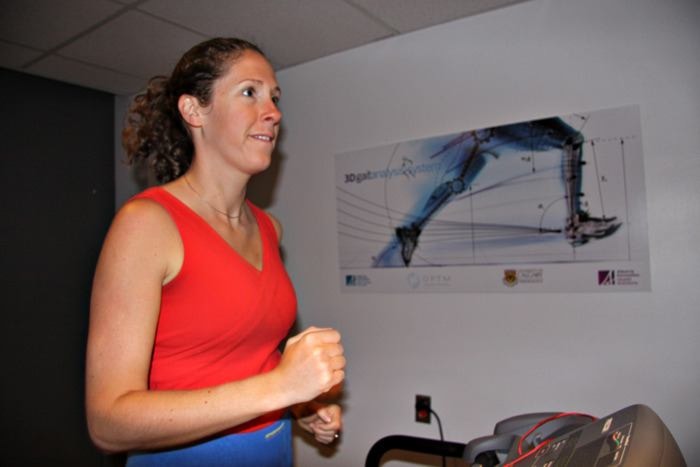Madi Fulton used to run a lot — 20 to 40 minutes every morning and 10 kilometres three times a week. Then about eight years ago, the Nelson Star sales rep started to experience clawing in her toes and feet, which worsened until she could hardly stand or walk.
“I used to wake up in the morning and not be able to walk on my feet,” she says. “I’d walk around on my heels for the first 20 minutes. I had to use two handrails to walk downstairs. I’d be very nervous.”
At a running clinic, she was told she needed to land heel first, “but run or don’t run, my feet just kept getting worse.”
Massage therapy afforded her some relief while she visited specialists, but no one could figure out what was wrong. She was forced to quit her job at a heli-ski operation because she couldn’t stand as long as required.
“I had to keep cutting back on my lifestyle,” she says. “I’m 34 and can’t go for a walk. I used to be able to run, to snowboard, to rock climb... I’ve spent thousands of dollars and clearly I haven’t found a solution yet.”
Facing drastic surgery with no guarantee of success, Fulton was intrigued to learn Nelson is now one of 10 places in Canada — and easily the smallest — with access to a 3D gait analysis system developed by the University of Calgary’s running injury clinic.

Dr. Reed Ferber says it involves putting a runner or walker on a treadmill for a few minutes while wearing reflective markers that are picked up by three infrared cameras.
“We essentially make somebody into a three-dimensional stick figure with millimetre accuracy,” he says. “We’re measuring what’s happening in terms of joint motions.”
The results are compared to a growing database of more than 1,000 people to understand what’s atypical about the way a person runs or walks.
Although using a single camera to analyze gait is not new, Ferber says research has shown it to be almost 30 per cent inaccurate. The triple-camera approach compensates for this.
One day last month at Nelson’s OPTM Athletic Therapy, Fulton put on the reflectors and went for a jog. Ferber says it doesn’t take long to get a picture of what’s going on.
“A lot of runners start feeling pain half an hour or 45 minutes into the run. But research has shown a runner’s mechanics don’t really change as they get tired,” he says. “Their mechanics are set because of strength, flexibility, and alignment. You don’t need to run them like a dog.”
The results are instantaneous and produced in terms of percentile rankings.
Fulton’s numbers were actually quite good: 77 for knees, 76 for hips, 68 for ankles, and an overall running injury index of 74.
“There’s no glaring red flag,” Ferber said. “There’s a little bit going on in each, and all those make for a comprehensive picture. By optimizing the entire chain of ankle, knee, and hip, we’re going to relieve that foot pain.”
The detailed analysis found Fulton’s hamstrings and ankles are weak, especially on the left side. Specific exercises can help strengthen them.
The system claims success in most cases: 92 per cent of patients are pain-free within four to six weeks.
Therapist Shauna Leduc of OPTM says she heard about the technology while attending Mount Royal College in Calgary and was excited to bring it to Nelson.
“People are coming in and feeling everything’s wrong. But they see the report and [realize] ‘I’m doing some things right!’ That’s a great message,” she says.
Leduc says the system removes a lot of guesswork and helps clients understand why solving a foot ailment may actually require working on a different body part.
Although the unit will be the only one in the Kootenays, she says it isn’t restricted to her own clients.
“We want to create a referral network for the most difficult patients. [Other therapists] can send them to me and I will do the report for them and give it back. We’re lucky to have this tool. Let’s all find a way to use it.”
Patients are also participating in ongoing research, as the results are added to the database.
To book an appointment, visit optmlife.com or call 250-551-OPTM.
